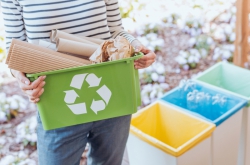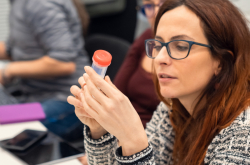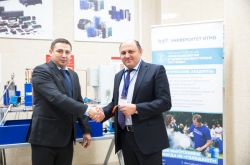Who else, besides ITMO University, is taking part in the Wastebake project?
ETB is a funding partner for small and medium-sized enterprises (SMEs) and research organizations active in the field of modern biotechnology. Project Wastebake is coordinated by ITMO University in collaboration with the University of Bari (Italy), and the University of Helsinki (Finland), with whom we have already launched several joint projects. Our industrial partner is the Italian SME Valle Fiorita that specialises in producing sandwiches. The thing is, to make a sandwich, you take a large rectangular loaf of bread, remove the crusts, and cut it into thin slices. Our Italian colleagues wanted to come up with a way to reuse these crusts.
What do bakeries usually do with their leftovers?
Crusts and leftovers are extensively used as feed for farm animals. Our research showed that this is one of the most inefficient methods of disposal of food raw materials. Some companies also simply throw the leftovers away, which is even worse than turning them into animal feed. It would be way more efficient to reuse waste to create products with high profit margins.

What is the issue with bakery waste in Russia?
In Russia, a significant portion of produced bread is discarded as waste. Grocery stores order more bread than they can sell, it goes stale and is then returned. The scale of the problem is enormous. More than 10 percent of bread is discarded as waste daily in St. Petersburg alone.
Does Finland face the same problem?
No, not the same, but Finland has its own issues. They also discard bread as waste, but not more than five percent. The problem there has to do with recycling substandard product.

How are you going to solve this problem?
Our project focuses on the development of bioprocessing technologies for the functionalization of bakery waste. We propose to convert bread waste into a smart syrup that can be used in the bakery, pastry, and brewing industries, and even in the pharmaceutical industry. Today these syrups are produced from starch-bearing raw materials, and to produce them, people grow corn all over the world. Russia has to import these syrups, and our project can contribute to imports phase-out, which is beneficial for the economy. But to do so, we have to make these syrups affordable.

What else can bakery waste be used for?
Right now we're focusing on ways of imparting these syrups with extra properties that would make them useful for other industries as well. The University of Helsinki and their industrial partner propose that we produce leaven enriched in probiotics, exopolysaccharides and other bioactive compounds that will help us create value-added products.

Do you work simultaneously with your Finnish and Italian colleagues?
It is we who are responsible for production of syrup from bakery waste, but we actually work simultaneously. To produce syrups, we need enzymes that are produced by our Finnish colleagues, so we communicate with each other constantly.

How are you going to implement this technology in Russia?
Our industrial partner is the company Iceberg, which specializes in production and distribution of food products, and syrups are among the products they offer. They will then buy our syrups at a more favorable price and sell them to food processors. Apart from that, the company possesses production facilities to recycle bakery waste. Some of our industrial partners also have such facilities, but unfortunately it’s not that simple. It is very expensive to transport waste to distant recycling sites, and it is more convenient to recycle it in bakery plants. It is beneficial for bakeries to recycle waste this way because it allows them to avoid extra costs associated with waste disposal.
What about the equipment? Is it going to be expensive?
When creating a technology in the laboratory, we already know what equipment we are going to need. Our technology is flexible and companies can upscale or downscale it. But it isn’t going to be expensive and it will definitely pay off.

Tell us a bit more about your team.
Our team consists of experts in baking technology and enzyme engineering. Our chief engineer Anna Kulminskaya is responsible for the concentration of enzymes and the strength of enzyme agents . The thing is, enzymes of one class often come from different sources and may therefore differ in strength. That is, we should always pay attention to the source and choose the most active enzymes. Elena Sergacheva, from the university’s Department of Food Biotechnology also takes part in the project.
You said that you have already met with your partners from Finland and Italy. Where did the meeting take place?
The meeting took place in Italy. As a part of the program, we visited the facilities of the project’s industrial partners, and a traditional Italian bakery where they make their bread in a wood-fired oven. The bakery is over 500 years old! We are planning to meet two more times. The next meeting will be held next year in St. Petersburg, and the next one will be held in Finland. These joint meetings are a great opportunity to visit our industrial partners, as well as exchange experience and technologies.




